Almost every vehicle manufacturer has a top-of-the-line or ‘halo’ product in its range. These halo vehicles are a showcase for the manufacturer’s engineering design capability and technical prowess.
Most of these machines are technological marvels, bringing what is essentially racing-grade equipment to public roads. That for some of these machines, like the Bugatti Veyron, never earn a profit for the manufacturer, is neither here nor there.
Others, like Ferrari’s range of exotica, command such interest from the buying public that Ferrari is able to choose exactly who buys its limited-edition hypercars. But, as in every vehicle, there is always that attainable piece of high-speed weaponry that is available to all, or at least, anyone who can pay the price.
In Kawasaki’s case, its halo motorcycles are the H2 and H2R hyperbikes, which are built-to-order, extremely fast and showcase Kawasaki’s manufacturing prowess. But, in the top-end stakes, it also has the ZX-10R as its flagship superbike.
That Kawasaki is serious about superbike racing at the top-flight cannot be denied, with its World Superbike (WSBK) campaign garnering wins in 2013 and 2015. This led Kawasaki to intensify its efforts for 2016, leading to development of the 2016 Kawasaki Ninja ZX-10R with input from WSBK champions Jonathan Rea and Tom Sykes.
Superbike racing at WSBK level is an excellent platform for manufacturers to show-off what their racebikes can do, and the 2016 Kawasaki Ninja ZX-10R is a prime example of that.
Drawing on the previous generation ZX-10R, which carried Jonathan Rea to his 2015 WSBK championship win, Kawasaki tore down the bike, and rebuilt it from the ground up to improve “everything down to the last nut and bolt,” in the words of Steven Ho, Kawasaki Malaysia’s marketing manager.
What this has given riders is pretty much a racebike with lights, mirrors and turn-signals, something that was started with the very first-generation Suzuki GSXR-1100. But, what is the 2016 Kawasaki Ninja ZX-10R like to live with on a day-to-day basis?
First off, the 2016 Ninja ZX-10R’s engine remains much physically unchanged from the previous year, with a 998 cc, four-cylinder, DOHC, 16-valve, liquid-cooled power plant, pretty much de rigeur at this level of the sport. Putting out a claimed 197 hp, and 205 when Ram-Air kicks in, it’s safe to say that the ZX-10R’s power output is, in Rolls-Royce parlance, “adequate”.
Shoving its power through a quartet of 47 mm Keihin elliptical throttle bodies with dual-injectors and a six-speed gearbox, the shifting is accentuated by the quick-shifter, or KQS, as Kawasaki terms it. An alphabet soup of acronyms comes along with the 2016 Kawasaki Ninja ZX-10R, including Kawasaki Launch Control (KLCS), Kawasaki Intelligent Braking (KIBS), Kawasaki Sport Traction Control (S-KTRC), Kawasaki Engine Braking Control (KEBC).
Do all these things work? They most certainly do. Aside from our road review of the Ninja ZX-10R, we also had a go on it earlier at Sepang, during the media test ride. This let us put some of this technology to use, safely, in a track setting.
With all this technology, and that humungous power delivery from Kawasaki’s inline-four, what is the Ninja ZX-10R like to ride? From our first impression at Sepang, nothing has happened on the road to change our view of the race machine.
And we use the word “race” advisedly. Getting on the 2016 Ninja ZX-10R revealed that the new generation bike is slightly porkier that the previous one, at 206 kg, versus the 2015 ZX-10R at 201 kg. These numbers are wet weights, according to Kawasaki.
A gain in weight is perhaps not surprising, given the additional electronics on the new Ninja ZX-10R, including a rather clever little box of tricks called the inertial measurement unit (IMU). We first encountered this on the 2016 Ducati Multistrada we reviewed, and this much we can tell you.
The IMU measures pitch and roll in five-axes, and the ECU calculates yaw, giving it six-axis measurement. The sixth axis is for situations where the rear wheel is out of alignment with the front wheel, such as during a power slide, which means the bike knows exactly what it is doing at any given time.
This lets the ECU control the way power is delivered to the back wheel, along with controlling and taking sensor readings from braking, throttle opening and position, and engine speed, thus preventing both low- and high-sides. It works, it’s a lifesaver and how we managed to ride bikes for this long without it, god only knows.
Riding the 2016 Kawasaki Ninja ZX-10R is, well, easy, but not in the way the “normal” road rider would know it. The riding position is designed for the whippet weight race jockeys in Kawasaki’s WSBK team, and means that you are folded over into a racing crouch.
Make sure your core body strength is good, because you’re going to need it. Grabbing the very low-set handlebars, and shooting off, showed where the biggest change had been made in the 2016 Kawasaki Ninja ZX-10R – the suspension.
Designed and developed with Showa of Japan, the Ninja’s 43 mm upside-down Balance Free front fork (BFF) came with stepless adjustment for rebound and pre-load, with adjustable pre-load. During our Sepang test ride, the Kawasaki technicians were careful to record the adjustments we requested for the Ninja, as the suspension setup is such that it is easy to get confused with a turn of the screw.
At the rear, the Balance Free Rear Cushion (BFRC) rear absorber, also by Showa, is mounted horizontally on Kawasaki’s Back-link mounting, and is also fully-adjustable. This includes stepless adjustment for both low- and high-speed compression damping as well as rebound damping, and spring pre-load.
Needless to say, with 120 mm of travel in front and 115 mm at the back, the suspension is well suited for racetrack duties. On the road, not so much. Hitting the ruts and bumps of public roads found the Ninja ZX-10R’s suspension to be sharp, though not harsh.
The rider will feel every single pebble on the road. While this type of feedback would be excellent for the track, on the road, a sustained stint in the saddle at highway speeds would soon tire the rider out.
Right up till the point when things come to a head, and swords are drawn. There is no mistaking that the Ninja ZX-10R is meant to be ridden fast, and two separate canyon-strafing sessions proved that.
All this clever dirty trickery allowed us to push the ZX-10R to its fullest extent on the road and round the corners. The handling tackling the canyon roads going up the mountain circuit was very stable, and very confidence inspiring.
However, riding the Ninja ZX-10 on the road demands full attention, and the razor-sharp handling of the Showa suspension means the bike reacts to any rider input, right or wrong. A careful reading of the corner is needed, especially at knee-down speeds, and the large safety margin we enjoyed on the track was now absent.
Heaving the Ninja into a corner let the bike’s electronics work their magic. There was never any point on the road where we felt intimidated by the bike, especially when heeled over at some, well, stupid, speed. The Sport-Kawasaki Traction Control (S-KTRC) which we left in full stability mode for the entire duration of the review, served well.
That the traction control light never even flickered once is testimony to the grip inherent in the Bridgestone Battlax RS10 tyres our review bike were shod with. We never tested the other ride modes available, simply because the race mode is only available when the dongle, which comes with the official race kit, is installed.
The other modes provide either maximum acceleration or maximum stability and are for road riding and wet conditions, respectively. To be honest, we would not know if the other modes would have had much impact on our riding, as we had the benefit of good weather throughout the review period.
Suffice it to say, we’ll take Kawasaki’s word that the S-KTRC works. That we didn’t find the Ninja ZX-10R in any way uncontrollable is testimony to the careful thought given to the design and setup of the bike’s suspension and engine by Kawasaki’s engineers.
Comfort in the saddle was reasonable, although we wouldn’t plan any trips much beyond the fuel tank’s 17-litre capacity. At full chat, the tank gave us about 200-ish km of range, at speeds we will not elaborate upon, which would be enough for most riders’ spines.
Launching the 2016 Ninja ZX-10R down the highway, and we use the word “launch” advisedly, proved that the machine was an excellent cruise missile. Speed was built-up deceptively fast, with acceleration happening so quickly that it was all we could do to use the quick-shifter to keep up with the gear changes.
Right after we settled down into ‘cruise’ mode on the highway, tucked in under the bubble, we glanced down at the speedometer. To say our eyes grew large at the numbers on the clock would be an understatement. A gentle squeeze on the brake lever brought the speed down to a slightly sane level, and let our heart rate subside at the same time.
Fast sweepers are very much the Ninja ZX-10R’s forte, and leaning over at some very high speed posed no issues whatsoever for the bike. Tighter turns and hairpins required some efforts on the bars when making very quick transitions between corners, but the drop-in was more or less effortless.
This was in part due to the redesigned chassis, which has a different steering head position from the 2015 model. While the numbers for the steering remain the same, the effort required was noticeably different, when we rode the 2016 and 2015 Kawasaki Ninja ZX-10Rs back-to-back.
The slightly longer swing-arm for the 2016 Ninja ZX-10R also made a difference in performing when doing the corner flip-flop – calling for a little more exertion – but paid dividends with high-speed stability on the highway. We guess that both Rea and Sykes didn’t mind a little more steering effort in a pay-off for straight-line stability.
Speaking of braking, the Ninja ZX-10R’s front brakes are lifted off Kawasaki’s H2 hyperbike. The radial-mounted four-piston Brembo M50 calipers grabbing 330 mm diameter floating discs delivered outstanding performance on the road.
This was despite us encountering a set of soft brakes during the test ride in Sepang, which we put down to “over-enthusiastic” braking as does occassionally happen when you let moto-journalists loose on race-grade machinery.
Slowing down on the Ninja was also aided by the massive amounts of engine braking, and the ECU carefully modulated the power, preventing the rear-wheel from locking up. This obviously obviated the need for a slipper clutch, and is an artful way of reducing weight.
We were, however, warned to leave the engine braking on, as the KEBC allows the rider to switch the engine braking off. This obviously de-couples the engine from the rear wheel during hard down-shifts, and is a racing technique used to carry more speed entering a corner.
The sensation of riding a bike with zero engine braking is something we have experienced before, and it is very strange and unsettling, especially if you are not used to racing two-strokes. So, with discretion being the better part of valour, we rode the ZX-10R with the engine braking on.
Power in all instances during our road review was more than adequate, prompting a niggling thought in the author’s mind about there being such a thing as too much bike. There is no doubt that balls-out superbikes are fun, but then begs the question if it’s still fun if the power can’t be utilised fully.
Accelerating through the gears, aided by the quick-shifter, was supremely precise, with no dropped or missed shifts. Almost faster than the speed of thought, the ZX-10R rider will need to have a nimble foot to keep up with the tachometer. The shift point for the quick-shifter is user selectable, and works in conjunction with the ride modes.
With the tachometer being a super-bright readout at the top of the instrument cluster, fading from green to red, monitoring engine speed was easy, and prevented missed shifts. We ran into the rev limiter a few times on the track, during hard acceleration up the front straight, but elected to be a little more circumspect on the road.
And on the road, with all 197 hp on tap, a discrete hand on the throttle was called for. Throttle response at all speeds was precise, and with the rev-happy inline-four, some restraint needed to be practiced to prevent unintended skyward motion of the front wheel.
The seating position, though, helped the rider place his or herself in the optimum position for full control, the saddle being cut narrow in the front and properly supportive at the rear. But as a whole, the seating position leaves the rider contorted into a proper race crouch.
This is, of course, great for track work, and race duties, but on the road? Let’s just say we found the riding position to be even more extreme than the Panigale or GSXR-1000, both full-on superbikes that we tested recently.
It was even more racer-like than the author’s personal Ducati 916, which was, 20 years ago, effectively a WSBK racebike with lights. A fair amount of the rider’s body core strength is called for to keep the upper body properly supported without placing undue pressure on the wrists.
Once you build up speed, and when we say speed, we’re talking somewhere at twice the speed limit, the ZX-10R’s riding position makes sense, tucking in under the reasonably sized fairing bubble, with the chin tucked in on the tank, and the rider’s bum shoved up hard against the back-stop on the seat fairing.
Otherwise? Bumbling around town is not the ZX-10R’s forte. The tall-ish seat, and bulk of the bike, made paddling around in traffic hard work. Forget a pillion as well. There really isn’t a point with that postage stamp-sized seat-pad and high-set pillion pegs, not unless you want to send your passenger to the chiropractor.
Certainly the riding position is biased towards race riding at super-high speeds. This was evident during our track session with the ZX-10R, when taking the proper cornering position – and switching over – was done with ease.
On the road, the ZX-10R will still cruise the highways, and handle the canyon roads with aplomb, the bike’s handling definitely out-classing 95% of the riders who haunt the roads of Ulu Yam and Bukit Tinggi. But, the rather single-focus seating position, and the whole raison d’etre of the ZX-10R as a WSBK bike, makes it hard work.
But saying riding the ZX-10R is hard work is underestimating the sheer amount of technical wizardry that lives under the machine’s bodywork that makes the rider’s life easier. We use the words “ghost in the machine” advisedly here, as during the week we lived with the ZX-10R, there were many instances when we knew, beyond a doubt, the bike was better than we were.
The entire bike, as a package is designed to go fast, and do it well. The traction control, cornering aids, braking control, full-titanium exhaust, electronic steering damper, all come together to let the rider concentrate on the ride. Inside the bubble, the large instrument panel is well laid out, with all the pertinent information right under the rider’s eyes.
The switchgear is something we didn’t pay a lot to, since, you know, racebike, but suffice it to say, the switches fell readily to hand, and worked well. A word about the horn though. For a superbike that costs this much, let’s say we’ve heard dead geese that honked louder.
For RM104,859, including GST, but excluding road tax, registration and insurance, the 2016 Kawasaki ZX-10R is perhaps the best superbike you can buy for the money today. While we reviewed the Winter Test edition of the ZX-10R, which comes in a stealthy matte-black (and we liked it), this happens to be a limited quantity colour for the Malaysian market, and buyers will have to make do with the Kawasaki Racing Team (KRT) edition with the green and black colour scheme.
So, who needs a 2016 Kawasaki ZX-10R? Definitely the track day addict or privateer racing would be remiss in not considering the ZX-10R as a weapon of choice. The handling, braking and overall package is geared for racing.
What about the road rider? Well, to be perfectly honest, at this level, few road riders are going to be able to use the ZX-10R’s capability to the fullest. At least not without making every ride a near death experience.
That this will not deter some riders is neither here nor there. For the money, the ZX-10R offers an awful lot of motorcycle, and is indeed the very latest in riding technology with all the little computer brains it carries.
For the rider who needs the latest and the greatest, the 2016 Kawasaki ZX-10R is pretty much it, even if another rider on a capable 600 might be able to ride rings around it on public roads. Size isn’t everything, while rider skill and control is.
This may be one of the very few machines that didn’t have the tits ridden off it by the author, and that list is not very long to begin with, mainly confined to pure race machinery at championship level. The 2016 Kawasaki ZX-10R handled anything we threw at it on the road – and the track – and asked for more.
Looking to sell your car? Sell it with Carro.


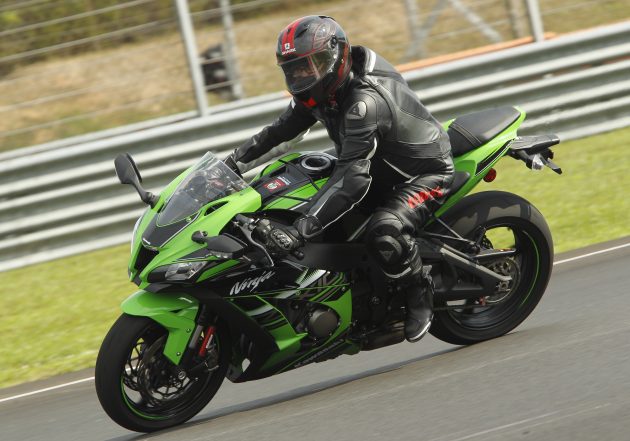
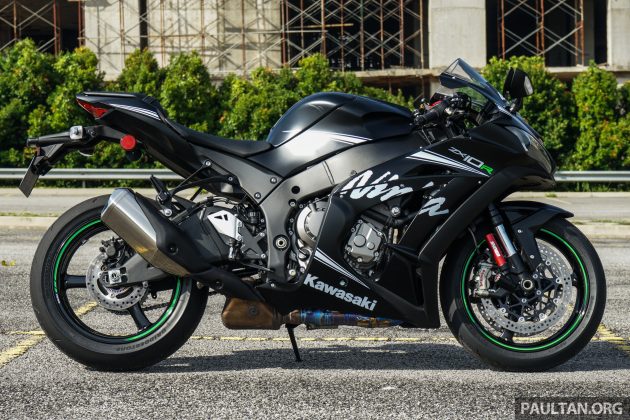




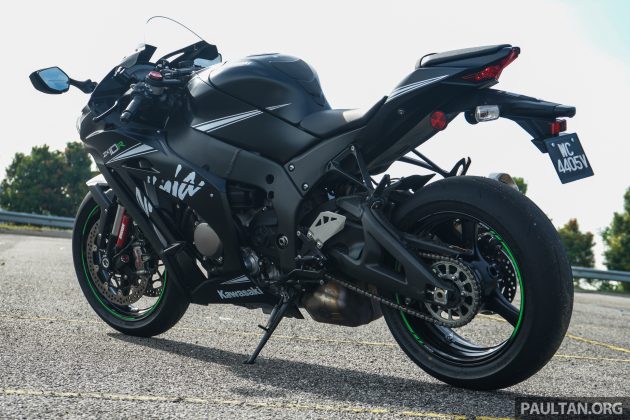
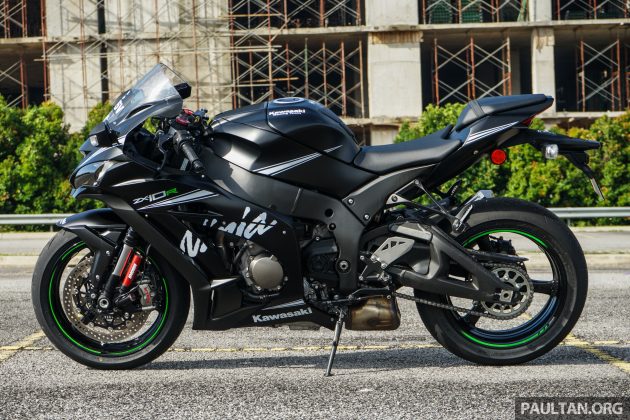



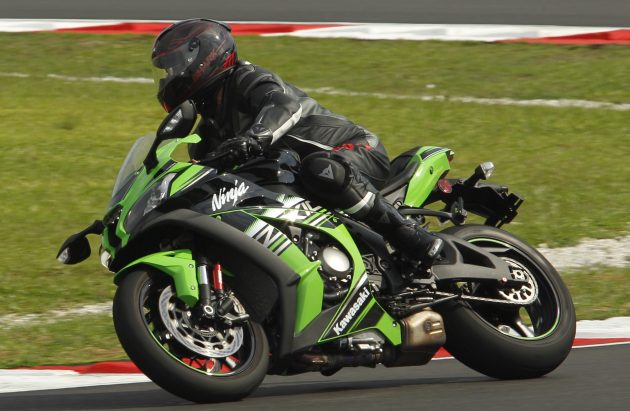
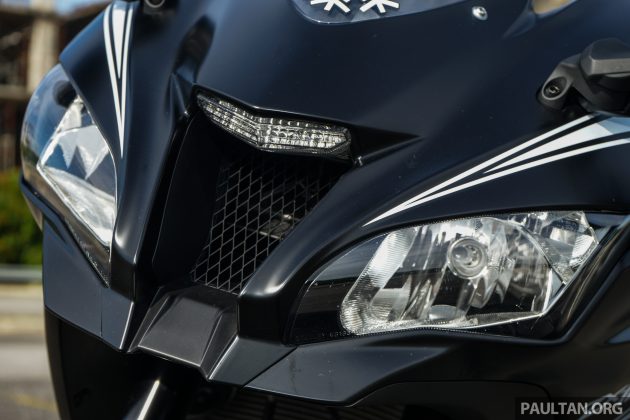



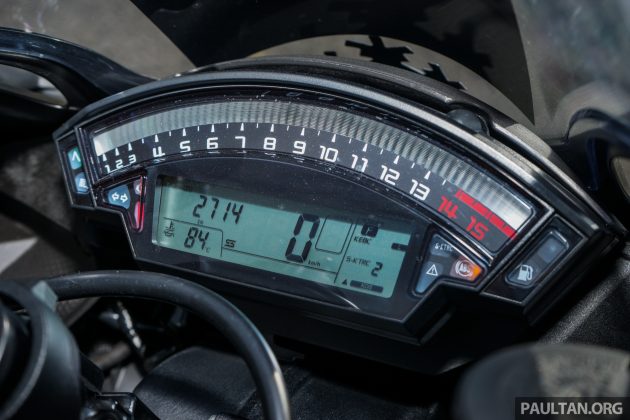
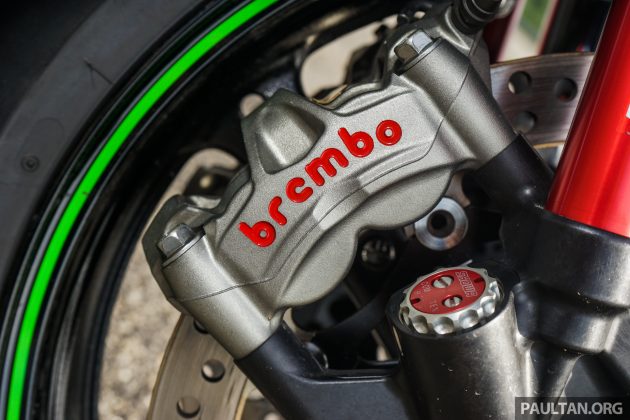
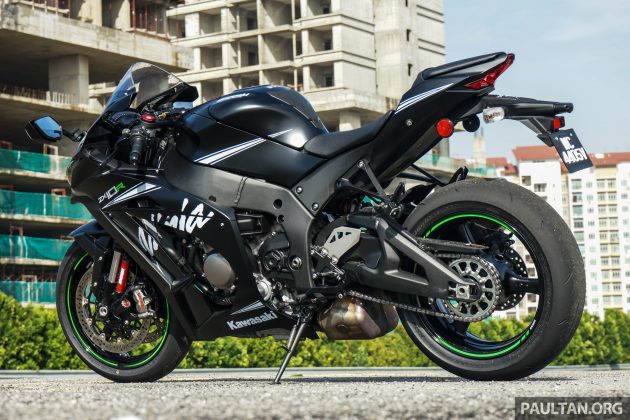



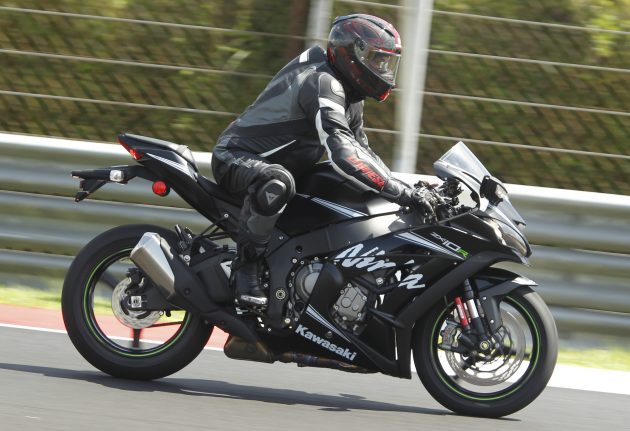



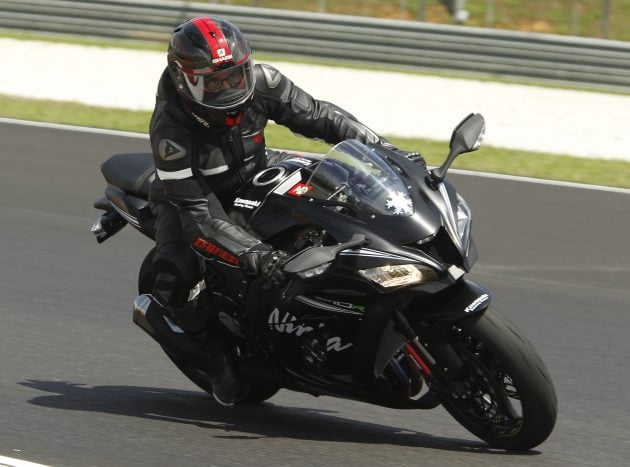


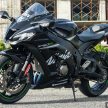
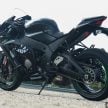
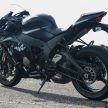
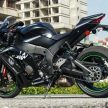
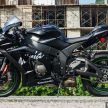

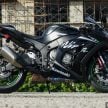
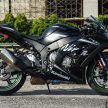
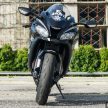

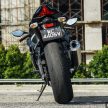

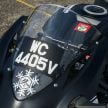
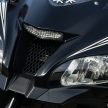
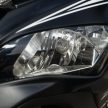
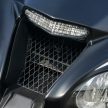
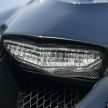
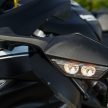
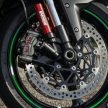
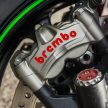
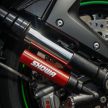
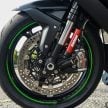
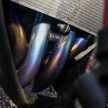
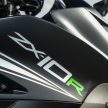
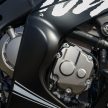
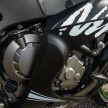
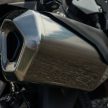
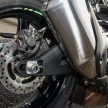
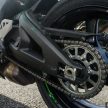
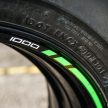

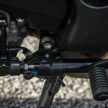
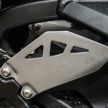
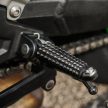
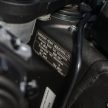

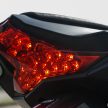
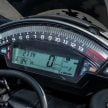
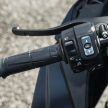
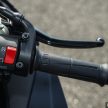
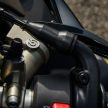
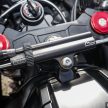
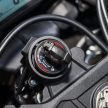
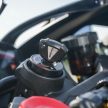
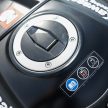




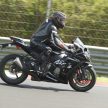
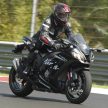
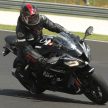

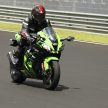

Great review! A question for Mohan tho. If you had to choose 1 superbike to own, which would it be?
Personally I’d go with the Panigale if money isn’t an issue. Otherwise I’d want the R1M / S1000RR.
I think you would have no problem getting the Panigale if you can afford the R1M or the S1000RR.
Is the Government going to reduce bikes prices? Already car prices Jib cheated us. Now, at least reduce bike prices.
Pity bike owners in Malaysia. just like car owners, we earn so little in salary but our vehicles cost a bomb.
I see now u went from selling toyotas to selling bikes. Oh well, at least u dun have to survive on maggi like before. Bravo!
The Honda RC213V-S, as close as it gets to have road-legal GP race bike. ^^
Great article! Please fix the typo ‘It was even more racer-like that the author’s personal Ducati 916’
Bikes. Meh.
tak minat ke atau tak mampu?
Got talent ride a superbike
Got no talent but want to pose, drive a super car
Got no talent and don’t want to pose, drive a sedan car
In stock form, many rate the ZX-10R behind the S1000RR, 1299 Panigale or even the R1M. But none of those bikes have clinched WSBK Championships like the ZX-10R did!
OK, maybe the R1 (last gen) have won the rider’s championship, once in 2009 with Ben Spies..
doesn’t the radiators get all chewed up very quickly, i’ve always wondered
Great review, very comprehensive. More bike reviews please. I’m getting kinda bored reading about car review nowadays.
You have done the bike justice with a great review.
The only comment I have in reading the article, is that I felt a clear distinction in between your Road test and Race track test in the article. Is almost like you have written 2 pieces of great work, and haphazardly joined them together. There lacks abit of cohesion, and certain points or references were repeated as a result.
Nevertheless, is a comprehensive and informative review.
Please do the same for a Kapchai shoot out!
And I also eagerly waiting for the Honda CBR250RR and BMW G310 review. Can’t wait.
It is great to how Kawasaki achievement in winning 2013 & 2015 WSBK as well as leading the current championship. Great as to know these are the bikes that can be bought off the showrooms. And Honda cbr1000 as well as Yamaha r1 nowhere near. And even better I you know Kawasaki doesn’t have a proper racing team like Honda’s HRC (a separate entity on its own) or Yamaha. Kawasaki racing is a just a small department within the motorcycle division. The main business for Kawasaki is heavy engineering – like bullet train, nuclear power plant or international space station.